


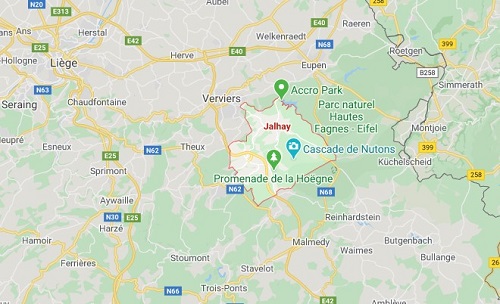
It is when going for a bombing mission over Nuremberg that the Lancaster LM 425 of the 550th was shot down by a German night fighter. He crashed near the Gilleppe dam. See the testimony of S. Keirle, wireless-Operator, survivor
Sgt. Keirle was blown from the plane sustaining injuries to his spine and left leg and found by a German soldier who obtained medical assistance for him.
After care, he was done PoW, as Sgt. Jeffrey and Sgt. Upton, survivors as him. Stanley Keirle was taken to Bankau, with the Russian advancement on January 19th 1945 joined the many POW’s beginning the long march from the camp in heavy snow. Owing to his injuries walking was very difficult and he got detached from the main Bankau group, his injuries preventing him from keeping up and was diverted to Sagan by the medical officer. From there he and others were sent to Luckenwalde by goods train the following day. He is believed to have arrived at R.A.F. Benson between the eighth and eleventh of May 1945.
The father of James Whitley, J.E. Whitley, who was captain of "Royal Engineers”. After the war, he received a letter of sergeant Keirle, in witch the wireless-Operator explained what happened.
Sergeant Keirle still remembers himself of the usual briefing of March, 1944. The target was Nurnberg. We took off at about 9:30 pm and everything seemed quiet until we approached the coast where the enemy was. We perceived the spotlights of the enemy, but we had managed to avoid them. Jimmy had perceived a fighter and we had then made the current operations of escape. The fighter did not attack us, but continued to fly below us. During this flight, I switched off the intercom to listen to the broadcast of midnight of the base.
Two minutes later, I felt shock. I immediately put back the intercom, just in time to hear the mid-up air gunner to inform me that the engine on the outside right and the wing were on fire. The pilot gave us the order to prepare us to jump. Having attached my parachute, I opened the door and saw that Jimmy and George had also their parachute on them. Then, the bomber informed us that bombs did not want to get loose.
Later I learnt that he had succeeded in dropping all the bombs. I was at this moment in the mid-up turret and I saw that the outside engine and half of the wing tore. The pilot ordered immediately an emergency exit and added that he did not any more succeed in holding the plane under control.
The aircraft slid towards right and lost of the height. We were trapped and could make nothing because of the strength of enormous drive provoked by the damaged right-wing. I lost consciousness, just like the bomber and the mid-up gunner. I remember myself vaguely that I fired in the rope of my parachute, but that I regained consciousness only having touched brutally the ground. I realized that I held a piece of the plane, the dome of the cockpit. I had difficulty releasing me of my harness and my jacket of rescue, as well as of parts of the wreck which surrounded me
I did not succeed in standing. After a few hours, German soldiers spotted me and stayed near me until morning. An officer came to question me about the operation that I led, the squadron, etc., but I let him know that I did not understand him. Then, I travelled aboard the sidecar of a motorcycle, what was going to be the journey where I suffered the most and the roughest of my existence. They laid me in a place, near a bridge.
Later, I was joined by the bomber Jeffrey and the mid-up air gunner Upton, the only survivors of the plane. We were brought in a hospital for war prisoners in Aachen. I stayed there whereas two other boys, who were not hurt, were sent to a Stalag. I had the broken vertical column, the broken left ankle, the torn spleen, a wound in the left knee and diverse bruises and cuts.
I stayed in the hospital of Aachen until the evening of April 11th when RAF attacked the neighbouring station. The hospital was touched and I stayed several hours under rubble. I was then brought in Bonn where I was able, after two weeks, to get in touch with two English. I was able to leave the hospital at the end of June, was not completely cured but too valid to occupy a German bed. They sent me to a center of interrogation to Frankfurt and then to Stalag Luft 7 until January 19th, 1945.
This day, we walked towards Germany, far from the Russians. We had traveled 550 km in one month and lived on what we found or collected on the spot. Finally, we arrived at Stalag 3A, at 50 km in the southeast of Berlin. We stayed until April 6th, the date in which the Russians freed us. The difficulties were not ended for all that because the Russians obliged us to fight with them to deliver Berlin. As everybody refused, they left with us without food and in a camp watched by armed guards. I was able to save myself one week later, together with four other soldiers. We looked for a road towards the American lines to Bitterfeld.
The Americans returned us of Leipzig to Reims aboard Dakotas, supplied us uniforms American and sent back in England aboard Lancaster. On May 19th I was back home where I learnt the death of my father during my absence.
Source: Goovaerts Wim; Avro Manchester en Avro Lancaster verliezen in België, 1941-1945; Tome 3; De Krijger, 2005
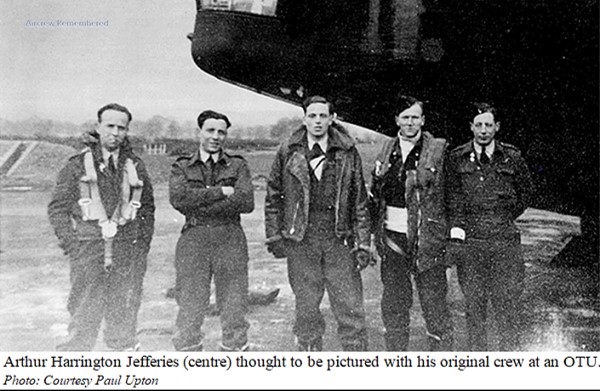
Source: Aircrews Remembererd
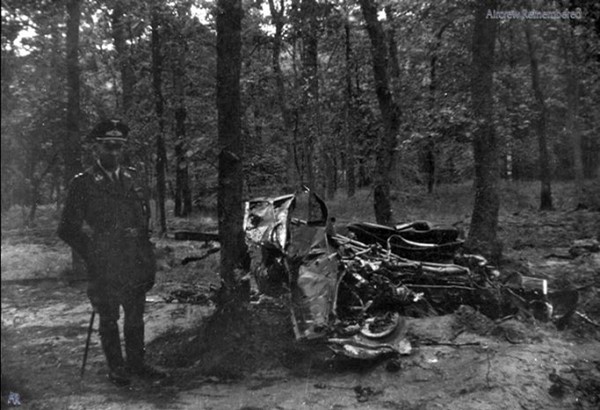



The wreck of Lancaster, on the lake Gileppe side (Source: Aircrews Remembered)
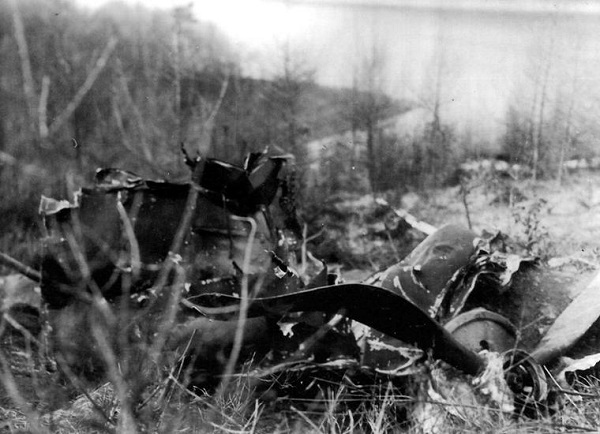
The wreck of Lancaster, on the lake Gileppe side (Given by the Historical Museum 40/45 of Ensival)

Wilfred Burie and the forest warden Mickael Dozin who found the part of Lancaster
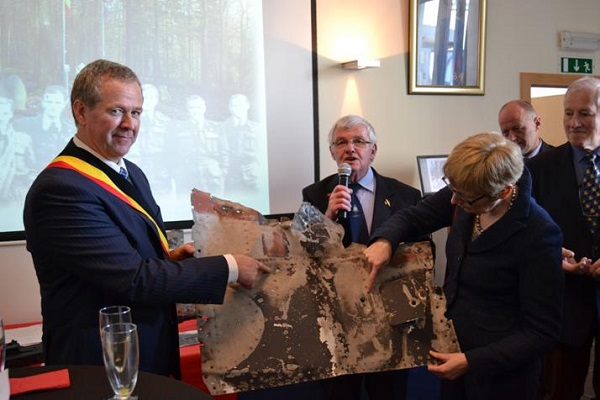
A bottom of aircraft wing which contains the holes of bullets will be also brought to 550 Squadron North Killingholme


